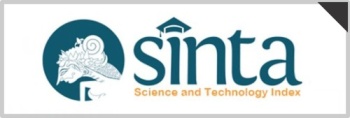Function and Zoning Mapping in Urban Tourism Facilities (Case Study: Scientia Square Park and Tebet Eco Park)
(1) Universitas Pradita
(2) Universitas Pradita
(*) Corresponding Author
Abstract
The density of urban areas caused by urban development and urbanization flows causes various problems that have an impact on the activities and routines of urban communities. Limited activities and space for movement are one source of boredom and stress for city residents. In dense urban areas, the existence of green open spaces is very limited so there is a lack of space for physical activities such as sports and recreational activities to reduce feelings of boredom and stress. Urban tourism is one of the urban tourism resources, which functions as a temporary diversion, pause and a short stop for urban communities from the hustle and bustle of the city. Scientia Square Park and Tebet Eco Park are examples of green spaces in densely populated areas that are suspected of being able to divert urban communities from the density of city activities. Under human needs where they need entertainment and relaxation areas to relax the mind, the study results show that these two parks provide space for the surrounding community to interact socially, relax, and become a place of recreation. This study, which is qualitative research, aims to map the functions and zones of open space activities through physical observation. Data search was carried out using the place-centered mapping technique. Photos are visualized graphically and analyzed interpretively based on the zones and functions of the activities. The hope for the future is that by knowing the function and zoning of activities, urban tourism can be presented through open spaces that can support the restoration function of dense urban activities.
Keywords
Full Text:
PDF (Indonesian)References
J. Gehl, Life Between Buildings: Using Public Space (6th edition), Washington, D.C.: Island Press, 2011.
K. E. Tambunan, U. Siahaan dan M. M. Sudawarni, Pengaruh Ruang Terbuka Hijau Terhadap Psikologis Masyarakat di Kota Bekasi Khususnya Kecamatan Jatiasih, Jurnal Arsitektura: Jurnal Ilmiah Arsitektur dan Lingkungan Binaan, vol. 19, no. 2, pp. 298-300, 2021.
J. R. Wolch, J. Byrne dan J. P. Newell, Urban Green Space, Public Health, and Environmental Justice: The Challenge of Making Cities 'Just Green Enough', Landscape and Urban Planning, vol. 125, pp. 234-244, 2014.
A. Ratnasari dan Y. B. Dwisusanto, Interaksi Manusia dan Lingkungan dalam Kajian Filosofis, MARKA (Media Arsitektur dan Kota), vol. 7, no. 2, pp. 195-208, 2024.
D. Hantono, Kajian Perilaku Pada Ruang Terbuka Publik, NALARs Jurnal Arsitektur, vol. 18, no. 1, pp. 45-56, 2019.
R. Prijadi, S. dan R. C. Tarore, Pengaruh Permukaan Jalur Pedestrian Terhadap Kepuasan & Kenyamanan Pejalan Kaki di Pusat Kota Manado, MEDIA MATRASAIN, vol. 11, no. 1, pp. 43-44, 2014.
J. Angelo dan N. Solikhah, Wisata Perkotaan Sebagai Konsep Pengembangan Pusat Aktivitas Transit Rawa Bokor, Jurnal STUPA: Sains, Teknologi, Urban, Perancangan, Arsitektur, vol. 4, no. 2, pp. 2755-2766, 2022.
K. Rizal dan L. Rosida, Strategi Pengembangan Pariwisata Perkotaan (Urban Tourism) Kota Mataram Provinsi Nusa Tenggara Barat, Media Bina Ilmiah, vol. 114, no. 2, pp. 2061-2067, 2019.
L. Annisa, Walking Tour Sebagai Strategi Pengembangan Wisata Perkotaan, Warta Pariwisata, vol. 21, no. 1, pp. 1-6, 2023.
K. Rizal dan M. S. Hali, Kajian Potensi Pariwisata Perkotaan (Urban Tourism) Sebagai Daya Tarik Wisata Kota Mataram Provinsi Nusa Tenggara Barat, Media Bina Ilmiah, vol. 13, no. 2, pp. 925-929, 2019.
A. Chiesura, The Role of Urban Parks for The Sustainable City, Landscaoe and Urban Planning, vol. 68, pp. 129-138, 2004.
A. Ratnasari dan H. A. Buwono, Inovasi, Tren, dan Pariwisata Sumatera Pasca Pandemi, dalam Sumatera Masa Depan, Lampung Selatan, ITERA PRESS, 2021, p. 272.
A. Ratnasari, J. Nathaniel dan N. Elianah, Optimalisasi Penataan Elemen Fisik pada Lansekap Scientia Square Park untuk Menunjang Fungsinya sebagai Ruang Terbuka Publik, SMART (Seminar on Architecture Research and Technology), vol. 4, pp. 133-145, 2019.
W. E. Rose dan R. Safitri, Peran Softscape pada Desain Lansekap (Studi Kasus: Scientia Square Park), Karya Tulis Imliah (KTI) (Undergraduate), pp. 1-7, 7 Desember 2020.
A. Ratnasari, A. Wulandari dan D. H. Syahbana, Efektivitas Fungsi Scientia Square Terhadap Aktivitas Pengguna sebagai Ruang Terbuka Hijau Kawasan Perkotaan, SMART (Seminar on Architecture Research and Technology), vol. 4, pp. 257-275, 2019.
D. Nugraha, Pola Pemanfaatan Permainan di Scientia Square Park Serpong Kasus: Zona Adventure Playground, Faktor Exacta, vol. 11, no. 2, pp. 196-202, 2018.
N. P. Putri, R. Suryadjaja, S. Santoso dan B. I. Wipranata, Kajian Penerapan Konsep dan Prinsip Ekologi Taman Kota (Studi Kasus: Tebet Eco Park, Jakarta Selatan), Jurnal STUPA (Sains, Teknologi, Urban, Perancangan, Arsitektur), vol. 5, no. 2, pp. 1905-1916, 2023.
Y. Suryantari, H. K. Ngarbingan dan A. Z. Akbara, Tebet Eco Park's Potential as A New Green Open Space in South Jakarta, Indonesia: An Analysis, Journal of Tourism and Economic, vol. 5, no. 2, pp. 17-119, 2022.
S. A. Prasetyorini, K. A. Mannan dan M. L. Pandiangan, Implementasi Prinsip Desain Universal pada Ruang Terbuka Aktif (Studi Kasus: Tebet Eco Park), Widyakala Journal, vol. 10, no. 2, pp. 80-86, 2023.
DOI: http://dx.doi.org/10.30998/lja.v8i1.26384
Refbacks
- There are currently no refbacks.




